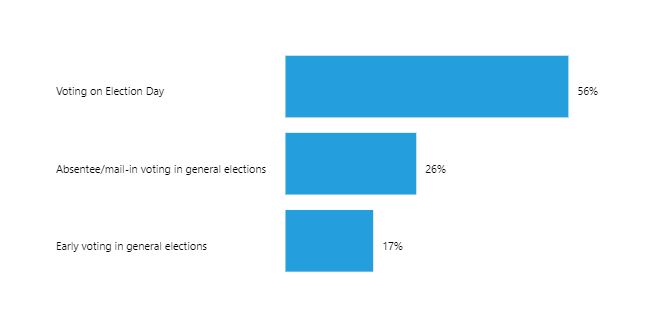Health
How COVID-19 is changing primary voting—and the November election

At the start of July, 18 states had a case rate higher than the US average. All but two, Colorado and Washington, vaccinated fewer people than the national average of 55% who received at least one shot.
New COVID-19 cases have decreased to levels equivalent to the beginning of the pandemic. In the week ending July 3, there were 3.9 new COVID-19 cases per 100,000 US residents every day. The case rate is 7% lower than in early June and 71% lower than the 13.4 new cases per 100,000 people in early May. During the peak of the pandemic in January, the rate was 19 times higher at 74.2 cases per 100,000.
Arkansas' case rate in early July was the highest nationwide: 15.7 per 100,000 residents, or four times higher than the US average. Forty-two percent of Arkansas residents have started vaccination, the sixth-lowest among all states.
Thirty-two states and Washington, DC, had case rates lower than the national average. Vermont, which leads all states with 74% of its population starting vaccination, had the lowest case rate with 0.6 cases per 100,000 people daily. Massachusetts (71% vaccinated) was the only other states with one or less cases per 100,000 people a day.
During June, there were 3.3 COVID-19 deaths per 100,000 people in the US. The death rate was nearly nine times higher in January at 28.5 deaths per 100,000 people.
Fifteen of the 20 states with the highest June death rates had vaccination rates below the national average. Michigan had the highest death rate at 6.6 deaths per 100,000. The state has vaccinated 52% of its population, three percentage points lower than the national rate.
There were 10,802 COVID-19 deaths in June, down 88% from January high of 93,451 and 40% down from 18,037 deaths in May. Deaths declined between January and June in every state ranging from a 74% drop in Colorado to a 97% drop in Vermont. Vermont had one death in June, its lowest monthly death toll since September and October 2020 when it recorded zero deaths from COVID-19.
Though people 65 and older continue to make up most COVID-19 deaths, the age group’s share of deaths dropped from 84% of 18,555 deaths in early December to 65% of the 2,144 deaths in early June. The latest CDC data shows that 88% of people in this age group have started vaccination, with 79% fully vaccinated.
Other age groups now hold a higher share of deaths than earlier in the pandemic. In June, people 55 to 64 years old made up 21% of COVID-19 deaths, more than double the 10% share in December. The share of deaths for people 45 to 54 rose from 4% in December to a pandemic high of 10% this June.
Black Americans were 20% of all COVID-19 deaths in May compared to 13% of the US population, a return to the disproportionate numbers seen early in the pandemic. Through September 2020, the number of Black Americans who died was disproportionate to their population share. From October to January 2021, the Black share of COVID-19 deaths decreased while white people died of COVID-19 disproportionately. In November 2020, 74% of the people who died were non-Hispanic white, compared with 60% of the population overall. The Black share of COVID-19 deaths rose above its population share again since February.
Explore more data on COVID-19 vaccinations, cases, and deaths.
Newsletter
Keep up with the latest data and most popular content.